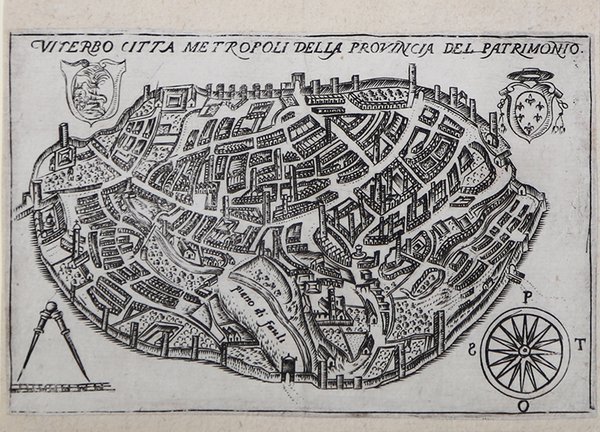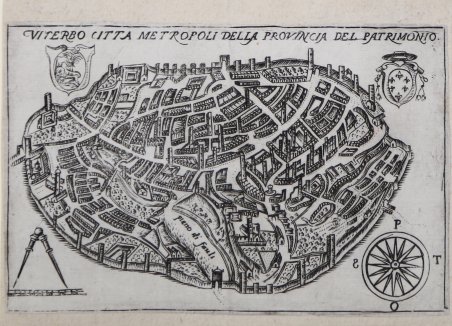Detalles
Lugar de impresión
Venezia
Grabadores
VALEGIO Francesco
Descripción
Veduta tratta dalla "Descrizione La Raccolta di le piu illustri et famose citta di tutto il mondo", edita da Francesco Valegio a Venezia verso la fine del’ 500, comprende circa 322 piante e vedute delle principali città del mondo conosciuto. Di questo volume si conservano diversi esemplari, tutti con numero variabile di incisioni e tutti privi di un indice a stampa. Inoltre gran parte delle tavole contenute nella raccolta del Valegio furono inserite nella "Nuova raccolta di tutte le più illustri et famose città di tutto il mondo" curata da Donato Rasciotti ed edita alla fine del sedicesimo secolo. Tuttavia è persino incerto quale delle due raccolte venne per prima alla luce ed ignote sono le datazioni di tutte le tirature conosciute. Molte delle immagini riprendono modelli figurativi apparsi nei primi volumi del Civitates Orbis Terrarum editi tra il 1572 ed il 1588 (e successivamente ristampati sino al 1617) dai cartografi Georg Braun e Franz Hogenberg. Incisione in rame, al bulino, con margini, in ottimo stato di conservaziona. Molto rara. La Raccolta di le piu illustri et famose citta di tutto il mondo, published by Francesco Valegio in Venice towards the end of the XVI century, containing about 322 plans and views of the main cities of the World. There are different examples of this work, every one with a different number of plates and without an index. Many of these plates have been afterwards included in Donato Rasciotti's Nuova raccolta di tutte le più illustri et famose città di tutto il mondo, printed at the end of the XVI century. It is still, however, quite unclear whether Valegio or Rasciotti published first his collection. Francesco Valegio was born in Bologna around 1560, even though some say he might have been born in Verona; as engrver and calcographer, he worked in Venice, very often in association with other publishers. The plates of his Raccolta, which can be considered his most important work, do not bear any date, except for those of Algeri, Costantinopoli and Rodi, signed by Martino Rota, dated 1572. The city plans signed by Rota, (engraver born in Sebenico who worked in Venice until 1573), are the most ancient core of the work, which make us think that this work has been planned by Rota himself. Many plates recall the figurative models of the Civitates Orbis Terrarum printed between 1572 and 1588 (afterwards reissued until 1617) by Georg Braun and Franz Hogenberg. It is therfore possible that Valegio started to select the plates by Rota around 1580 and afterwards enlarged his collection at the end of the century. 112 plates bear Valegio's signature or monogram and as many can be ascribed to him; 69 have been ascribed to an unkwown artist. The collection was extremely successful and became the base for the following copies. Valegio's plate have been reissued by Raffaello Savonarola (Lasor a Varea) in the Universus Terrarum Orbis in 1 713. There are 52 plates depicting the peninsula. A distinctive element of this corpus is the presence of a number (from 1 to 60) with ancient ink, on the white upper margin; that makes us presume that these examples come from another collection of Valegio, "Raccolta delle più famose Città di Italia", which he created by changing the front page of his previuos publication. Copper engravings, particularly rich and with good contrast, in excellent condition. Very rare. Cfr.


Descubre cómo utilizar
Descubre cómo utilizar

